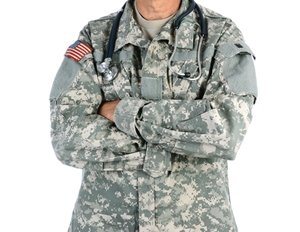Marine Gunnery Sgt. Brian Meyer is a double amputee working to assimilate himself back into life after service. After losing most of his fingers and a leg as a result of a roadside bomb, he became determined not to let the injuries deter him from living a normal life. He even refused having wheelchair ramps built into his home, according to a report by The Associated Press.
Fortunately for Meyer, some relatively new procedures are drastically improving his quality of life by increasing his range of motion and his ability to use his injured limbs. Meyer is undergoing ablative laser treatments, which is a procedure commonly associated with smoothing wrinkles or treat acne scars. Instead, the lasers are being used on his scar tissue, leading to some dramatic improvements in many of his physical abilities. Meyer can now use the remaining fingers on his left hand to exercise, ride his motorcycle and perform many of the daily tasks necessary to lead a normal life.
"When the job requires me to hook something and grab it, now I can do it," Meyer explains in an AP video. "Before, I couldn't."
A groundbreaking treatment
Fractional ablative resurfacing is a procedure that Naval Medical Center San Diego dermatologists helped pioneer for veterans, but the treatments help many more. According to the AP , many of the medical breakthroughs have been presented to the American Academy of Dermatology in order to help severely scarred people in the general population as well.
"These are not special, scar lasers or special, wounded warrior lasers," Chief of dermatology at NMCSD Cmdr. Peter Shumaker told the AP. "We've taken these techniques that are primarily used for cosmetic purposes and altered them a bit to apply to trauma rehabilitation."
The U.S. Department of Veterans Affairs recently produced an article about the laser treatments, saying they can dramatically improve both cosmetic appearance and function in very large scars. According to the article, the laser treatment vaporizes scar tissue with high precision, allowing scar tissue to be remodeled with very low risks of complications. The article goes on to state that these treatments often improve patients' lives by enhancing rehabilitation, allowing for earlier, greater use of prosthetics, increasing walking function, enhancing grip and reducing feelings of pain or itching.
More progress to be made
Shumaker does not call this is a wonder treatment, however.
"The technique is not a replacement for existing scar treatments, but is a valuable tool to accelerate rehabilitation and help fill the void between physical therapy and surgical revision," Shumaker told the VA.
Fractional ablative resurfacing is becoming a more common procedure among wounded soldiers, and with roughly 2,000 troops who have lost limbs after serving in Afghanistan, the treatments could vastly improve the quality of life for hundreds. Currently, the Naval Health Research Center is beginning a six-year study to better understand the road to recovery for many wounded warriors. The Wounded Warrior Recovery Project includes 1,500 participants so far, but the Navy is attempting to sign up 10,000 in total.

